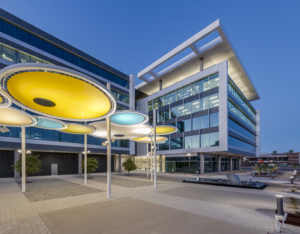The Sustainable Six: Redefining Sustainable Living in the Valley
It’s been a little more than a year since representatives from the U.S. Environmental Protection Agency, Department of Housing and Urban Development and Department of Transportation announced they were teaming up to bolster community and economic development nationwide.
Like a band of caped crusaders, members of the Partnership for Sustainable Communities (now the Office of Sustainable Housing and Communities) pledged to help create greener, more sustainable communities through six guiding “livability principles” used to coordinate federal transportation, environmental protection and housing investments at their respective agencies.
At the time, EPA Administrator Lisa P. Jackson said, “It’s important that the separate agencies working to improve livability in our neighborhoods are all pointed in the same direction. We’re leading the way toward communities that are cleaner, healthier, more affordable and great destinations for businesses and jobs.”
Indeed, that sentiment, and the pot of federal money the Obama Administration has made available — including $1.5B in Transportation Investment Generating Economic Recovery (TIGER) grants and $100M released in June for regional integrated planning initiatives — is proof the suburban landscape is changing.
While there is still much work to do, several Valley municipalities, along with organizations such as the Arizona State University Stardust Center for Affordable Homes and the Family, the Maricopa Association of Governments (MAG) and the newly formed Livable Communities Coalition, are taking steps toward improving the livability of communities statewide, as defined by these guidelines. Here’s a look at the six principles and how Metro Phoenix stacks up:
1. Provide more transportation choices
While the Valley still has miles to go before we wean ourselves from our auto addiction, light-rail construction is a step in the right direction. Next, stop chasing federal highway dollars and, instead, use light rail as the bait to snare funding to create additional transportation options.
2. Promote equitable, affordable housing
This principle aims to broaden the spectrum and expand location- and energy-efficient housing choices for people of all ages, incomes, races and ethnicities to increase mobility and lower the combined cost of housing and transportation.
3. Enhance economic competitiveness
In a January Arizona Republic editorial, ASU President Michael Crow outlined an economic-competitiveness strategy designed to “address long-term priorities, not just the current cycle.” Among other tactics, he called for an aggressive, coordinated strategy to tap out-of-state investment funding from a variety of sources for research, infrastructure and health and welfare. “Not competing to get the tax dollars we send to Washington each year simply makes no sense,” he wrote.
4. Support existing communities
Conventional financing and zoning code issues have become the bane of transit-oriented, mixed-use development and redevelopment efforts Valleywide. However, many municipalities are working to honor historic neighborhoods and update building and zoning codes to encourage adaptive reuse and infill projects. That action will contribute to community revitalization.
5. Coordinate policies and leverage investment
Regional planning and interconnectivity are more important than ever. Valley cities must think regionally, especially if they hope to snare federal dollars.
6. Value communities and neighborhoods
Valley cities such as Phoenix, Scottsdale and Chandler were beginning to create more livable, walkable communities before the housing market crashed. Now more than ever, development at the people scale, rather than large, single-use tracts, is needed to promote a sense of community.
Livability ranks high on the wish lists of companies looking to relocate. As the federal tide shifts in favor of sustainable living, we need to change with it. Even a place known for its Wild West sensibilities and love of private property rights can learn to adapt.



